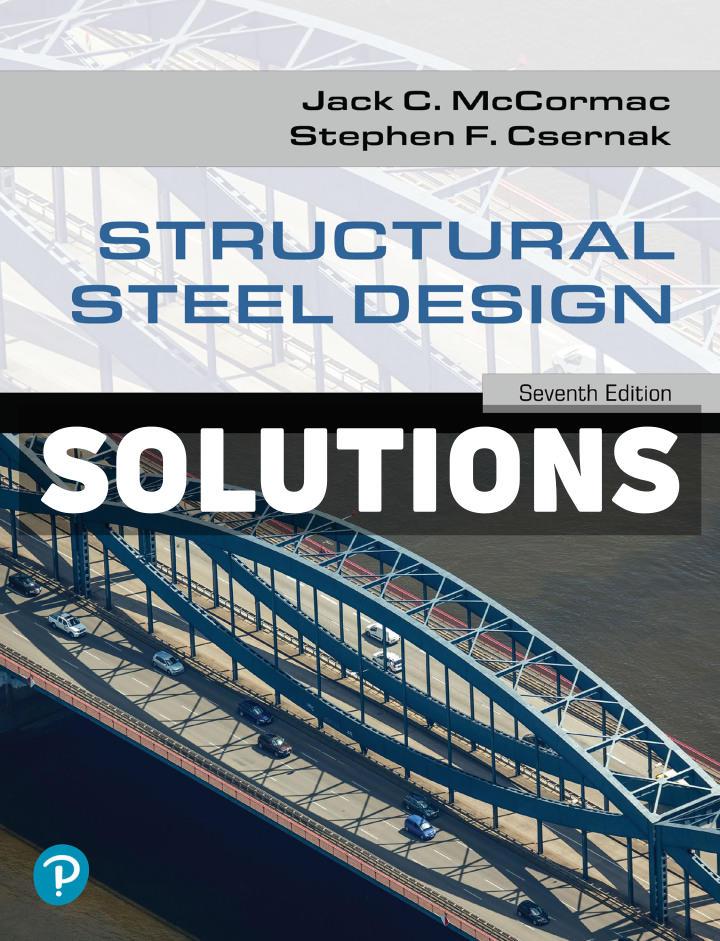

Chapter 1 Introduction to Structural Steel Design
Problems 1-1 to 1-12
1. 1884
2. Ductility, Elasticity, Permanence, Uniformity, High-Strength/Weight Ratio, Constructability or Fracture Toughness.
3. Corrosion, Fireproofing Costs, Susceptibility to Buckling, Fatigue or Brittle Fracture.
4. Carbon Content:
Wrought Iron – Very low carbon content (≤ 0.15%)
Cast Iron – Very high carbon content (≥ 2.0%)
Steel – Carbon content in the range of 0.15% to 1.7%
5. Mild steel carbon range is 0.15% to 0.29%
6. Hardness and strength will increase but the steel will become more brittle, and its weldability will be adversely affected
7. W shape section
8. Elastic Strain – strain that occurs before the yield stress
Plastic Strain – strain that occurs after the yield stress
Strain Hardening – a range after plastic strain in which additional stress is necessary to produce additional strain
9. A992
10. Hot Rolled, Cold Formed
11. C sections A992
HP sections A572
W shape A992
12. The vast majority of designers select members of sufficient size and strength. Failures result from inefficient attention to:
1. Detail of connections
2. Deflection
3. Vibration
4. Erection Problems
5. Foundation Settlements
